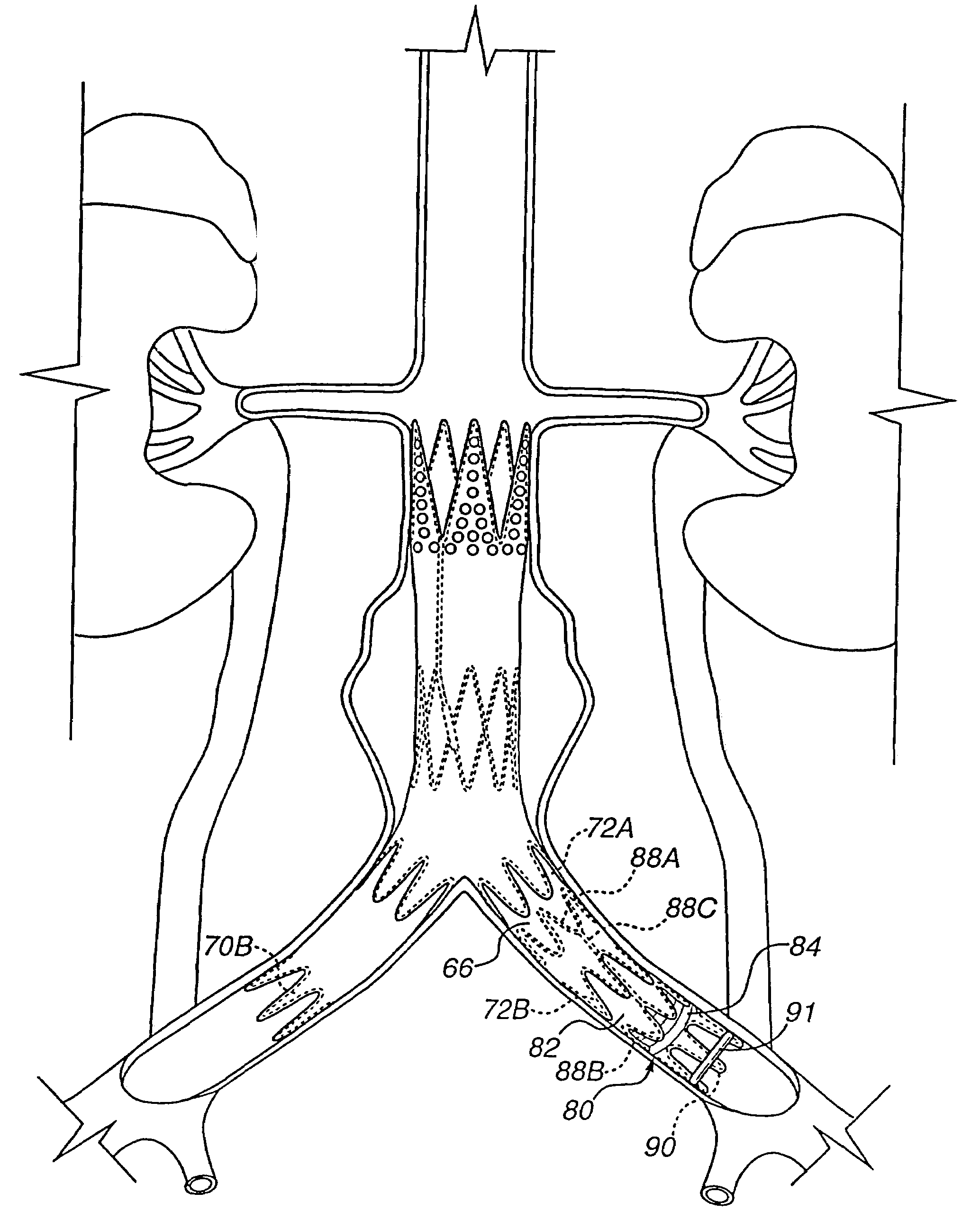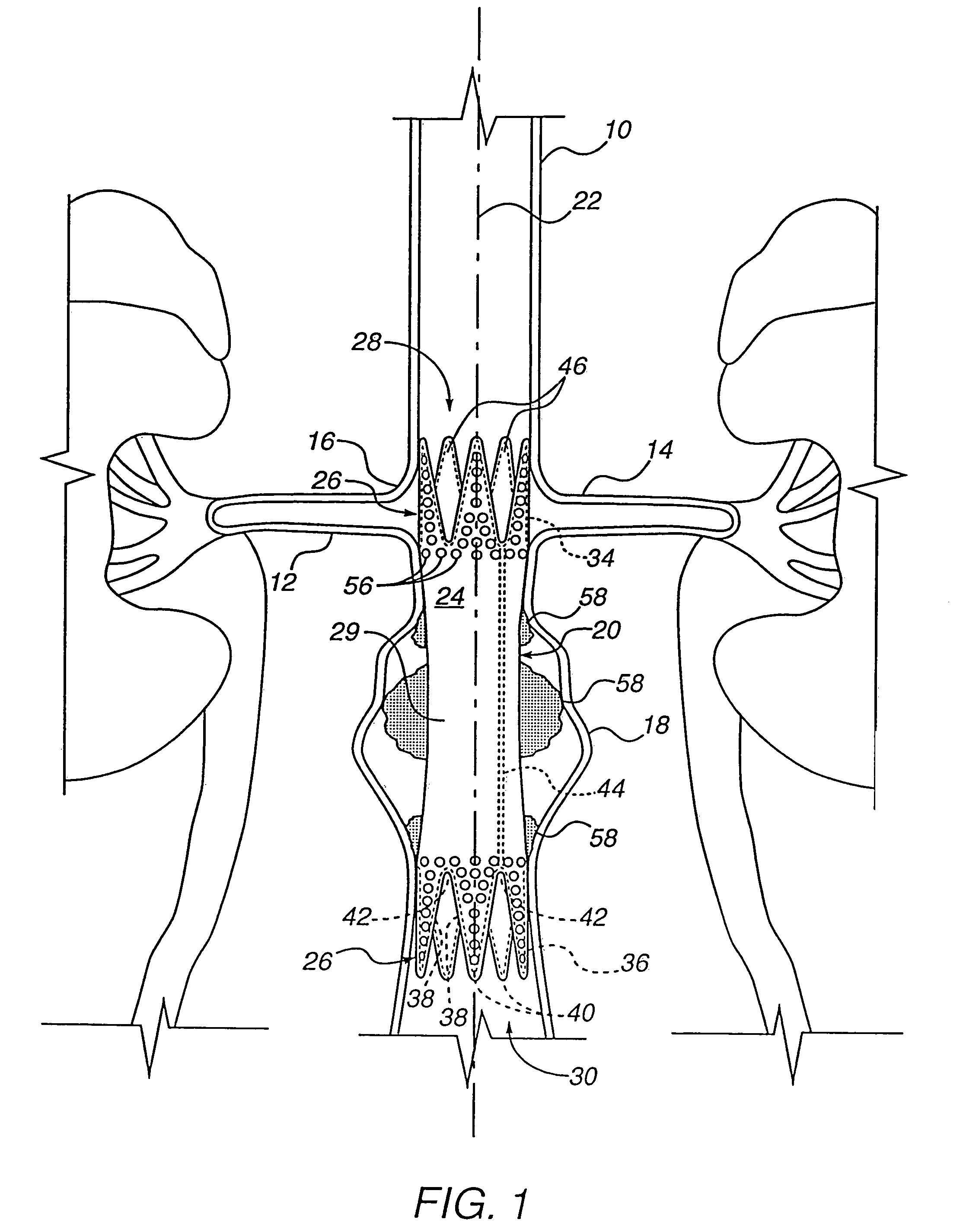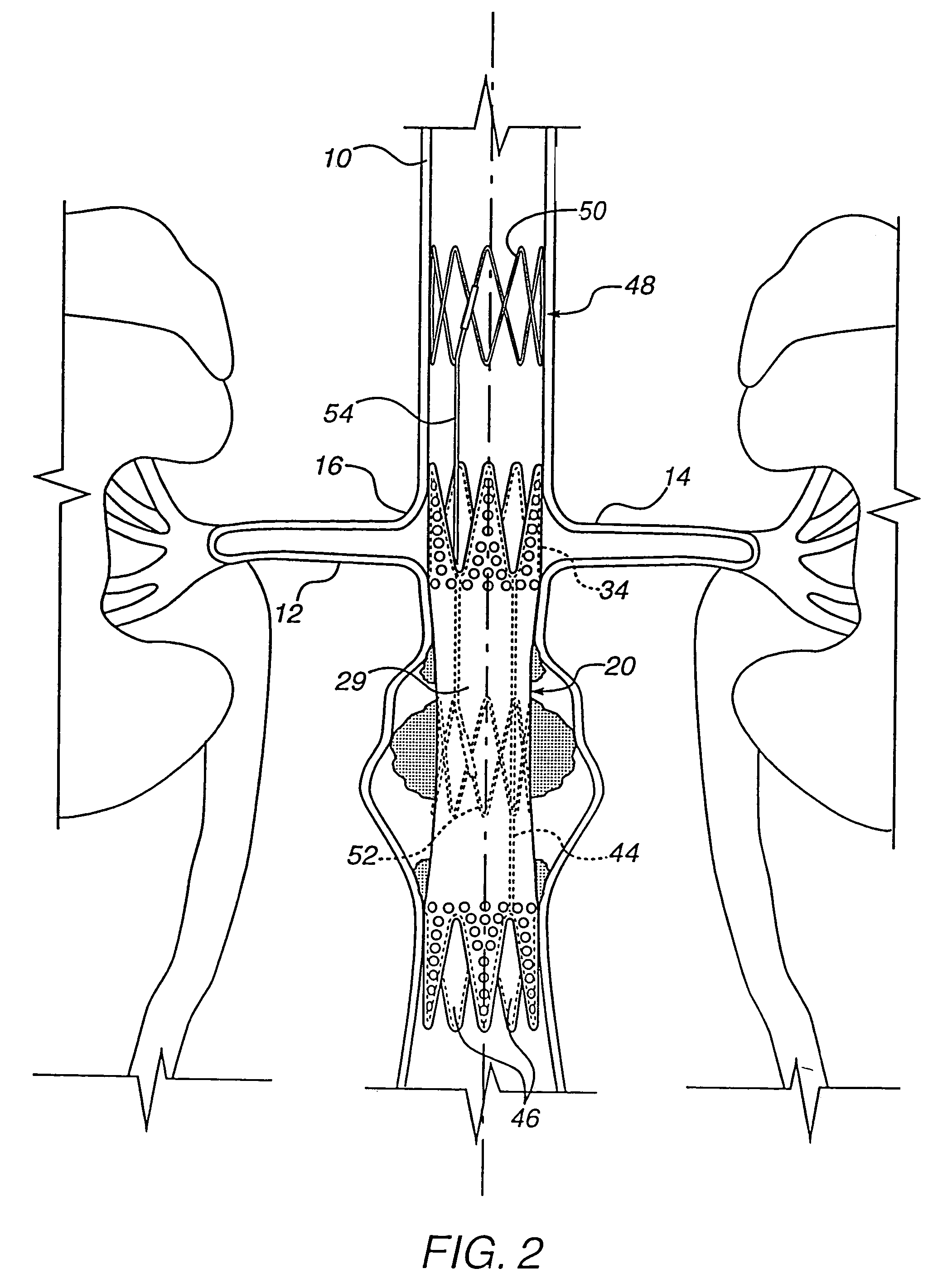Apparatus for engrafting a blood vessel
a blood vessel and apparatus technology, applied in the field of catheter-based graft systems, can solve the problems of life-threatening, increased risk of complications, and inability of the vessel lumen to conduct fluids, and achieve the effects of convenient insertion, secure grafting, and minimal incision
- Summary
- Abstract
- Description
- Claims
- Application Information
AI Technical Summary
Benefits of technology
Problems solved by technology
Method used
Image
Examples
Embodiment Construction
[0057]Referring initially to FIG. 1, there is shown an aorta 10 joined by renal arteries 12 and 14 at aorto-renal junction 16, and having an aneurysm 18 below the aorto-renal junction characterized by a weakened and expanded vessel wall at the diseased region. In accordance with the present invention, an elongated single-limb tubular graft 20 is deployed at the region of aneurysm 18 as a prosthetic device for the purpose of relieving blood flow pressure against the weakened vessel wall by acting as a fluid conduit through the region of the aneurysm. In its deployed condition, graft 20 defines a central longitudinal axis 22 extending in a direction of blood flow through aorta 10, and generally comprises a deformable graft material 24 enclosing radially compressible spring means 26 for biasing a proximal end 28 and a distal end 30 of the graft into conforming fixed engagement with an interior surface of aorta 10.
[0058]Graft material 24 is a biocompatible, flexible and expandable, low-...
PUM
 Login to View More
Login to View More Abstract
Description
Claims
Application Information
 Login to View More
Login to View More - R&D
- Intellectual Property
- Life Sciences
- Materials
- Tech Scout
- Unparalleled Data Quality
- Higher Quality Content
- 60% Fewer Hallucinations
Browse by: Latest US Patents, China's latest patents, Technical Efficacy Thesaurus, Application Domain, Technology Topic, Popular Technical Reports.
© 2025 PatSnap. All rights reserved.Legal|Privacy policy|Modern Slavery Act Transparency Statement|Sitemap|About US| Contact US: help@patsnap.com



